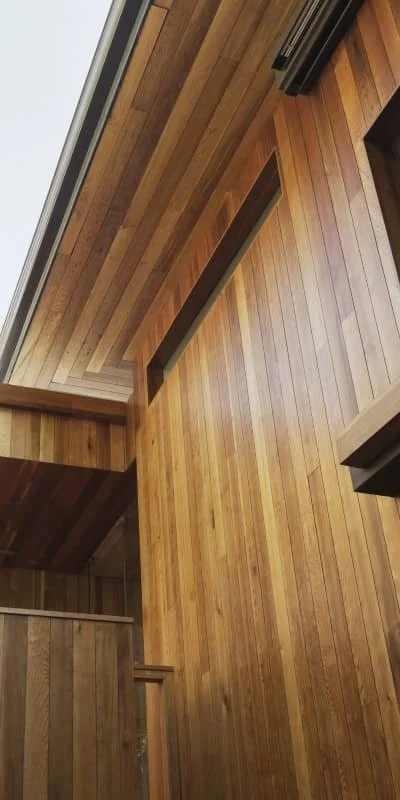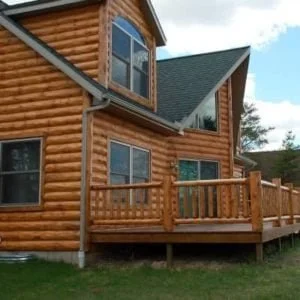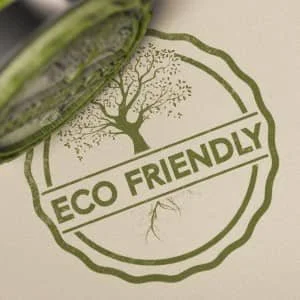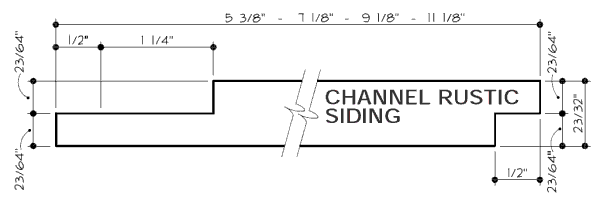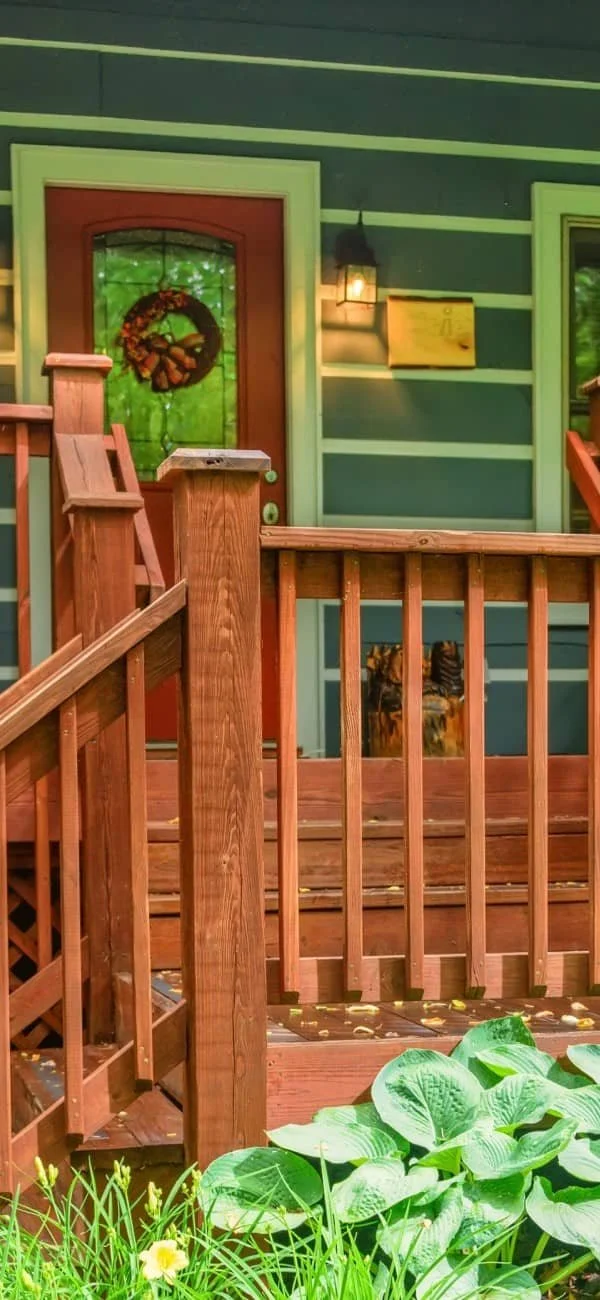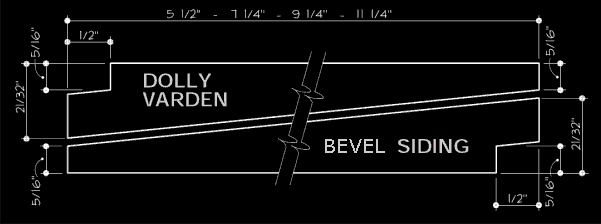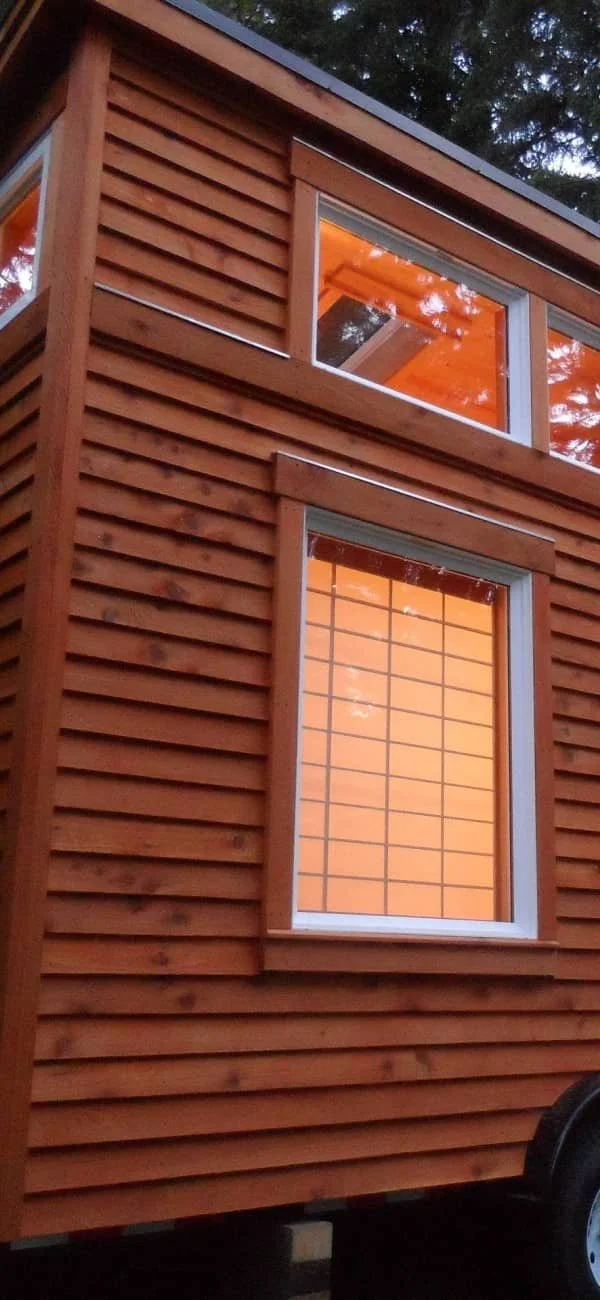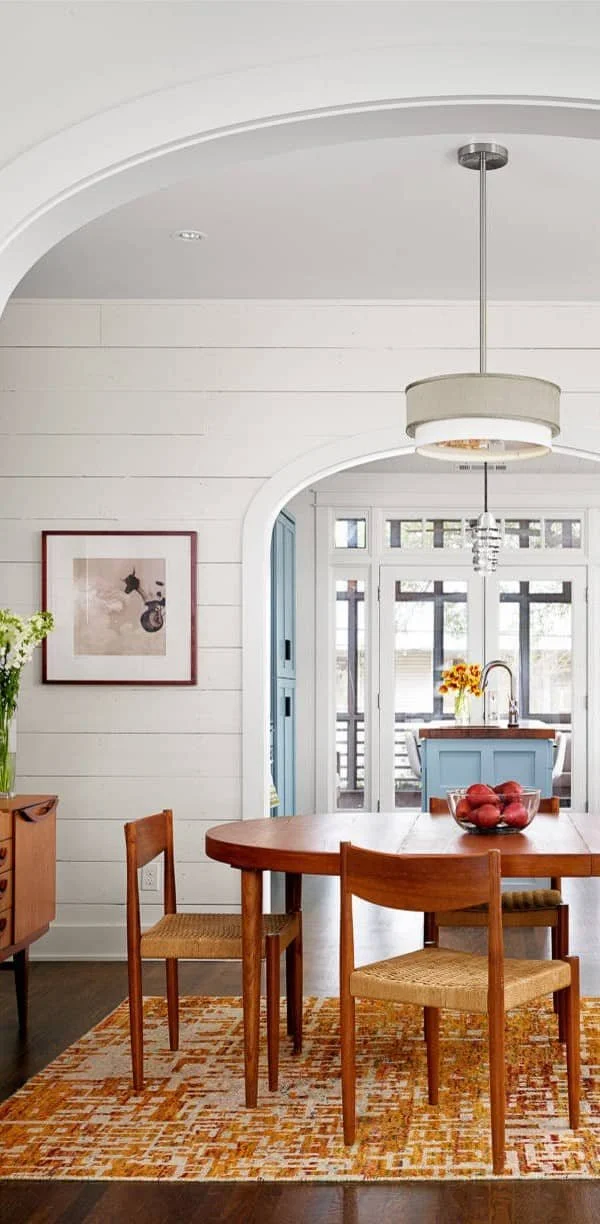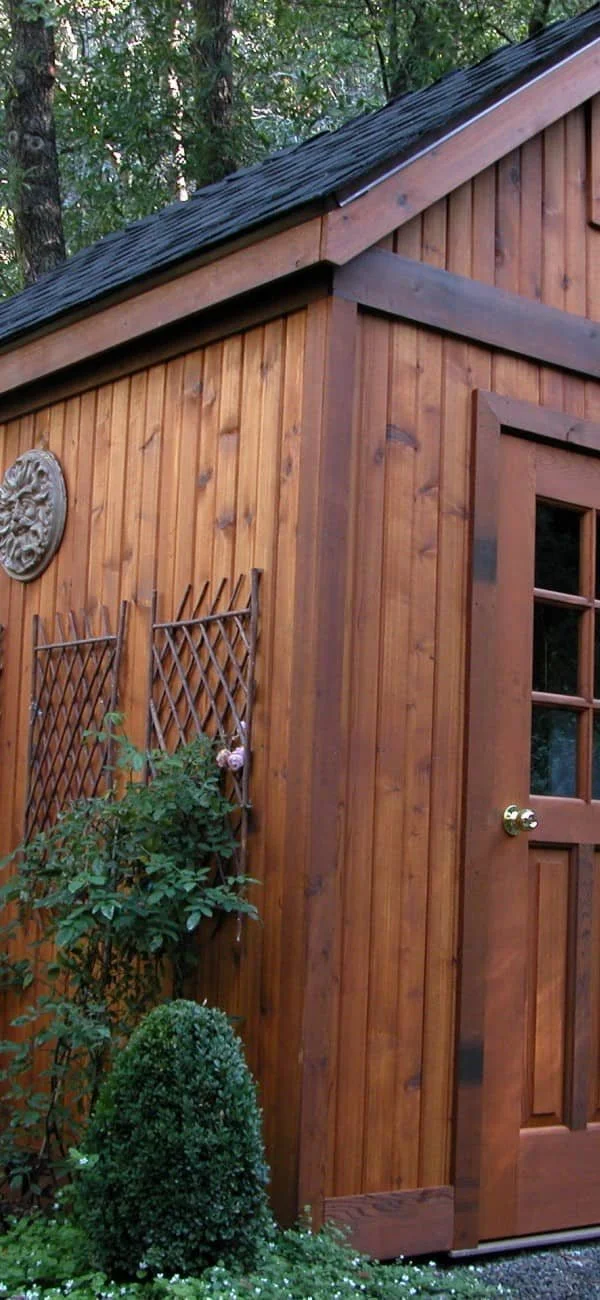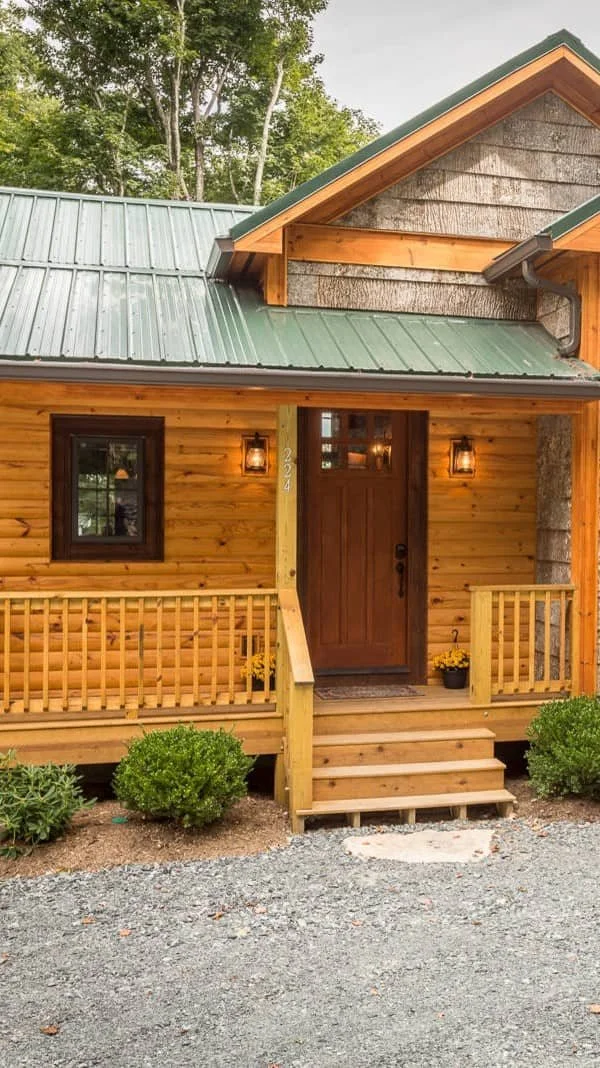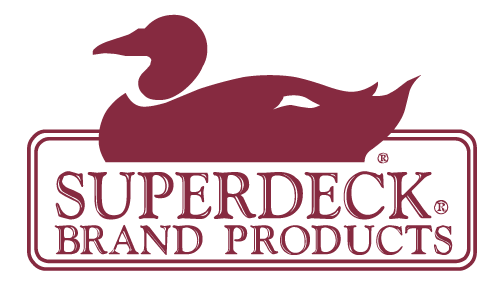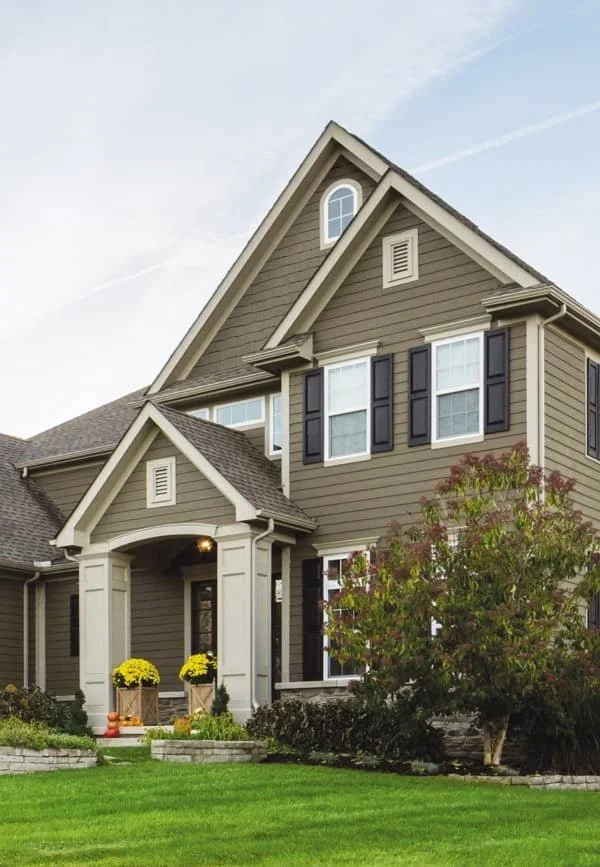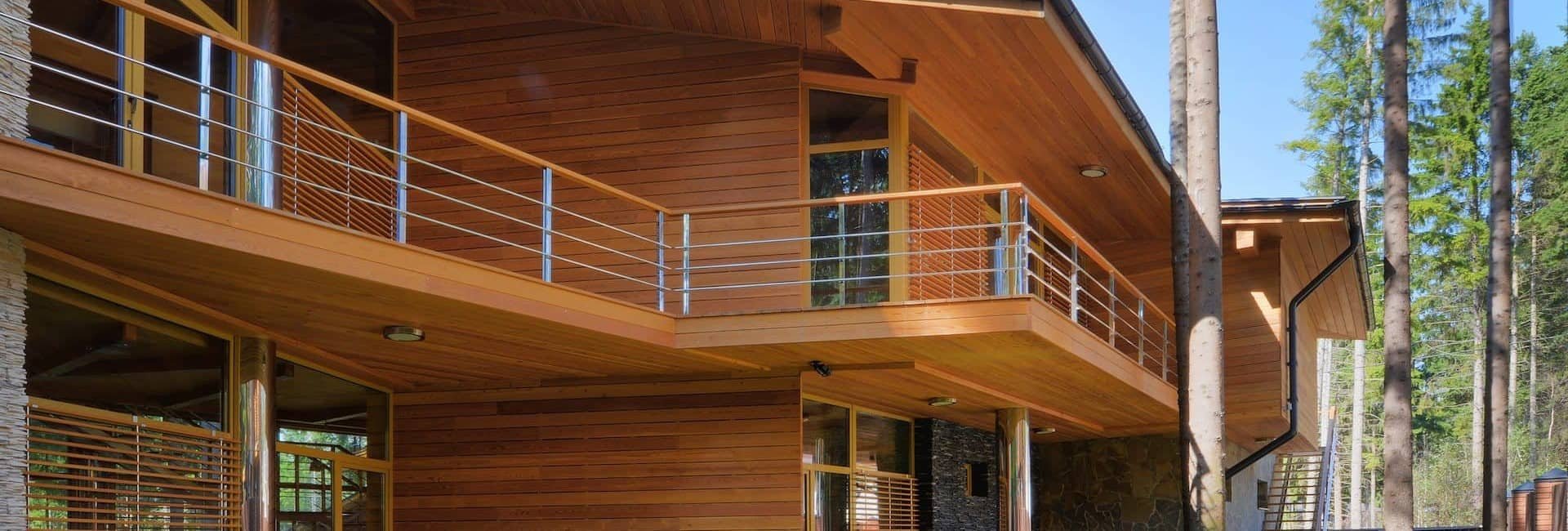
Cedar Siding | Wood Siding
Cedar Siding | Wood Siding
Natural wood siding has been used as home siding materials for centuries. The wide range of natural colors and textures available is unmatched by any other siding material. Depending on the type of lumber and pattern you select, it is adaptable to a wide variety of regional preferences, architectural styles, and climates. RMFP is a premier supplier of cedar siding and can supply anywhere across the country.
Wood siding comes in two different grades. Siding products are generally categorized as either premium or knotty grades. A premium grade will have fewer features such as knots, pitch streaks, and so forth. While a knotty grade typically will have sound, tight knots. Choosing the right grade will be determined by the type of look you are trying to achieve.
Wood siding provides a unique twist to home aesthetics. Coming in a range of material options, styles and colors, natural wood siding will improve the overall look of any home design. But what kind of siding do we offer? We pride ourselves in stocking natural wood siding materials. We also offere these materials in different designs, such as log lap, shiplap, bevel and even tongue and groove. Each design is unique and offers a completely different type of aesthetic.
For example. Cedar Tongue and Groove Siding is a very popular choice among homeowners and contractors. The jutting ribs, or tongues, slide into the grooves and adjacent boards. The result? A flush and clean appearance that creates a tight seal enabling high quality insulation – perfect for a variety of climates across the U.S.! Another advantage to Cedar Tongue and Groove Siding is that it is very sturdy, stable and durable. This highly resistant material will have very little need for repairs, especially when installed for interior projects. Plus, you can install it either vertically or horizontally, giving you a little more creative freedom for your project.
We have plenty of options for siding, whether you are looking for wood siding or faux. If you’d like to learn more, give us a call! One of our siding specialists is happy to answer any questions you may have!
Cedar Siding | The Good, The Bad, and the Great
As a homeowner, your first priority is to keep your home safe and always looking new from the inside out. The siding that you place on your home is vital to the look and feel of your home and it can help you when it comes time to resell. There are many different options of siding out there from composite, vinyl, and natural wood. All of these are great options however, there is one type of siding that is held above all and that is cedar siding. Cedar is a highly popular species of wood and is a big contender among homeowners, architects, builders, and contractors. The main question though, is why is cedar siding held at such a high standard? Well, here’s why:
Pros of Cedar Siding
Cedar is natural which makes it perfect for a raw look
Cedar is resistant to rot, decay, and insect attacks
Cedar is very adaptable when it comes to any environment. It does not tend to soak in moisture
Cedar is easy to stain or paint so you can customize it to your specific style
Cedar is a soft wood which makes it easy to work with and maneuver
Cons of Cedar Siding
Even though cedar is less likely to absorb moisture, it still is somewhat porous like normal wood and if you leave it in water or have standing water on your deck, it could affect it.
Cedar requires some maintenance like re-staining or painting and the occasional repair as it ages.
As you can see, the pros of cedar siding outweigh the cons in a huge capacity. Let’s dive in a little deeper to each bullet point and answer the question of “Why would you want to use cedar siding as opposed to other species?”.
Breaking Down the Pros of Cedar Siding
-
Natural
Cedar siding is a 100% natural material that is easy to get and is perfect for someone looking to achieve a raw and minimalistic look. Cedar siding is popular for many reasons, but its appearance is at the top of the list. Cedar siding has a vibrant wood grain and deep coloring that is accented with knots and grains. If you are trying to achieve a rustic, raw, natural look in your style, cedar siding is the best direction to go.
-
Resistant to Damage
While cedar siding is a softer wood and is easier to work with and maneuver, it is also durable and resistant to a lot of damage. Cedar siding can be sealed and protected against water damage which allows it to be resistant to rot and mold. Insects are also not fond of cedar which means it is also protected from any damage that may be related to insects. Aside from these damages, cedar siding can withstand harsh weather like cold and hot temperatures, wind, rain, hail, sleet and snow so you can use cedar in any climate no matter where you are located.
-
Adaptable
In many environments, it is either cold or hot and it can also be very humid in some areas. Cedar siding can easily adapt to these different climates. For example, in the cold the cedar will adapt which means there will be minimal shrinkage. In the heat, wood tends to swell where cedar does not. The same goes with humidity, cedar will not absorb the moisture and change shape.
-
Painting and Staining
There are some species of wood that don’t hold paint and stain very well. Cedar siding on the other hand, can be stained or painted whatever color. It tends to actually enhance the vibrant wood grain and knot patterns.
-
Soft Wood
Cedar is a softer wood species, so you can work with it much easier than exotic hardwoods, for example. As a siding on your home, you want a species that is adaptable, easy to maneuver and cut in the case you need to adjust the sizing.
-
Installing Cedar Siding
It is important that when you are installing siding on your home, you make sure you are comfortable doing so if you are a DIY homeowner. If you aren’t sure exactly what needs to be done or what tools you need, you may want to either work with a professional or give us a call and see what advice we can give you. It is vital that your cedar siding is installed properly without any issues so that your siding is durable and will withstand normal wear and tear damages.
Common Siding Questions
-
Both Cedar and Redwood have natural oils and resins to resist rot, decay, and insect infestation. Both are low maintenance, and you can allow them to weather and develop their own unique character.
Our kiln dried cedar siding resists splitting, cupping and swelling, and provides a sound product. Cedar accepts stains very well and is widely used for it’s beautiful grain, which can be weathered into a natural grain color.
Redwood will guarantee the same resistence to shrinking, warping, and cupping as cedar, but will cost more because the availability for Redwood is limited. But the draw to it is due to its rich texture and tones.
Both types can last up to 75 years or more depending on the homeowner’s ability to properly maintain their siding.
Other options that have grown in popularity are highly cost effective species such as Spruce, Pine, and Fir. Although these species do not have the same natural oils and resins to resist rot, with the advent of inexpensive and high quality oil based stains, it is now possible to use these beautiful woods and ensure that they will last for decades to come.
-
Step 1 – Preparing the surface
Wood siding is usually fastened to a layer of plywood sheathing covered with a moisture barrier frequently referred to as house wrap. Installed onto the exterior surface of a wood frame house, the house wrap acts as a water and air barrier, but allows water vapor to exit so as not to accumulate inside the wall.Step 2 – Cutting Wood Siding
Use a standard circular saw to cut the siding to the appropriate length, ensuring that the joints line up on a stud. Use of a measuring square is recommended so that each board is cut accurately. Otherwise, uneven gaps will appear at the joints on the finished wall. Be sure to make each cut slowly to prevent rough edges and splintering.Step 3 – Installing Wood Siding
Siding is usually installed from the bottom up and may require scaffolding to complete even a single story structure. The lowest siding board is installed onto the bottom of the plywood sheathing so that it projects about an inch below the top of the foundation wall. Siding is nailed into each wood stud. -
Each profile has its own benefits, but the overall judgment of the design is determined by the homeowner. Whether the home owner is looking for a clean design (i.e. Tongue and Groove) or looking for something a little more traditional (i.e. Bevel) it really is matter of preference. Our showrooms have numerous different styles, dimensions, species and grades of siding on display to assist you.
Finishing Cedar Siding
Cedar siding, because it is so versatile, can be finished in just about any way you want. You can paint cedar or stain it with the proper paint or stain for decking or fencing. You can also spray paint it if you are using cedar for a DIY project. Most of the time when homeowners or contractors use cedar, they want to preserve the natural and raw look that cedar portrays. If you do choose to keep your cedar siding natural, we recommend that you seal it with a clear sealant for added protection. This way you get the natural look, but you also get the protection of having an extra layer in between the wood and the environment.
Cedar is one of the most popular building materials that are used in the construction and building trades especially for siding. Most every company sells cedar siding in one way or another. The opportunities for what you can use cedar for are endless. Come check out our cedar siding and the different products that we offer.
If you have further questions about cedar siding or would like info on pricing give us a call today! We also have social media and blog pages that we strongly encourage you to look at so you can gain some knowledge and inspiration for your newest siding projects.
Breaking Down the Pros of Cedar Siding
SPECIES AVAILABLE
Cedar Siding
Pine Siding
Beetle Kill Pine
Aspen Siding
Doug Fir Siding
Ipe Siding
Hemlock Siding
Redwood Siding
Mahogany Siding
Need something else? Just ask!
READILY AVAILABLE
Because it is such a common product, it is readily available and can be installed quickly. Wood siding is so easy to install, that most homeowners can do it themselves.
GREEN PRODUCT
What could be more environmentally friendly than a real wood product? Wood is the definition of biodegradable, making it one of the most ecologically friendly types of siding.
CHANNEL SIDING | CHANNEL RUSTIC SIDING
When you want a rugged wood siding that stands up to harsh weather, channel siding gives your house the style and protection it needs. At Rocky Mountain Forest Products, we supply premier channel siding for new homes, weathered homes, and everything in between! Our natural siding fits almost every setting, from snowy mountain cabins to cozy suburban neighborhoods.
LAP SIDING | BEVEL SIDING
When you picture traditional siding, the first thing to spring to mind is the bevel siding style. Also known as clapboard, bevel wood siding has been protecting and beautifying houses across the country for hundreds of years. Whether you need siding for your new or existing home, Rocky Mountain Forest Products can provide premium bevel siding to fit your budget and style.
SHIPLAP | SHIPLAP SIDING
Whether you’re building a new shed or updating the look of your home, siding plays a key role in protecting your structure against the elements. At Rocky Mountain Forest Products, you can purchase shiplap siding for an affordable rate. Our natural wood siding, when correctly installed and maintained, will last for years to come, so you can count on it for maximum protection.
TONGUE AND GROOVE SIDING
Quality wood siding does more than protect your home—it creates a traditional, clean design that gives your home or building a down-to-earth aesthetic. If you want to replace the siding on your home, consider installing Rocky Mountain Forest Products siding with tongue and groove. You’ll love how it looks.
LOG SIDING
Do you crave the serenity of a simpler time? Do you want to stay connected to the great outdoors while enjoying the comfort and modern conveniences of home? Choose log lap siding.
Don’t See Your Pattern?
Give us a call! We can custom mill any siding profile you need.
LP SMARTSIDE SIDING
LP Smartside siding is a material that offers the cozy feel and vibrant beauty of traditional wood, but with more sustainability. LP SmartSide undergoes a manufacturing process that allows it to withstand wear and tear from weather, as well as termites and decay. They offer a wide selection of profiles to chose from, which allows all homeowners to find the right type of siding for their home.
CEDAR SHAKE SIDING
Imagine having the exterior of your home look rustic, while also giving off a vintage vibe. Cedar Valley produces a handcrafted material that is the perfect shingle paneling product. They carry standard shingle panels, with the option of specialty products to portray a unique look. They also supply corner systems to tie your shingle job together and products that are a combination of CVG and Western Red Cedar, for the ideal end look. There is a wide variety when it comes to the design and layout of your shingles. We carry everything from Cedar Valley to Shakertown to ease your stress and worry. Check out all the different styles and start your install today!

 CALL FOR A QUOTE
CALL FOR A QUOTE

